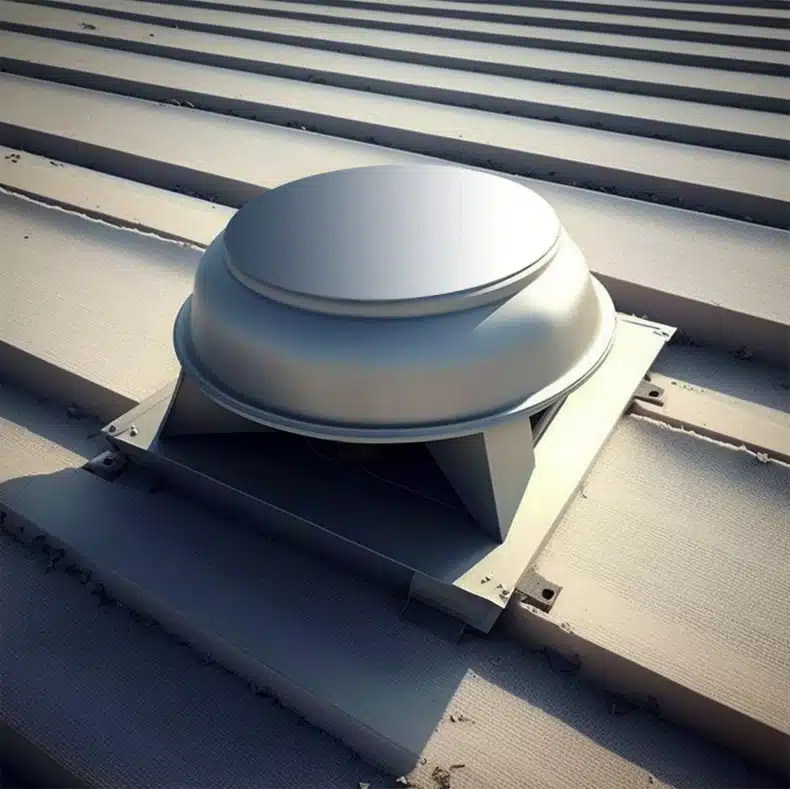
Have you heard that there are various roof vent types? Very few people know this or what type of roof vents they have in their homes.
Roof vents are a critical part of a house, serving several purposes. A roof vent will let the air out of the space under your roof and refresh it with fresh, clean air. They keep your home well-ventilated, reducing moisture and dampness to avoid mold growth. Plus, they also help to keep your energy bills low.
So, here’s a simple guide to the various types of roof vents. It’s helpful if you want to know what kind of roof vent you have or if you’re installing new roof vents.

7 Types of Roof Vents

There are two main categories of roof vents: active and passive vents. Active vents use fans to circulate the air, whereas passive vents do not. I’ll cover both types of roof vents below, so read on to find out more.
Power Vents

A power vent uses an electric van to ventilate your roof, so it could push your energy bills up. But they work well to reduce dampness and prolong the lifespan of your roof. This type of roof vent sits near the top of your roof and is circular. You should expect a power vent to last a few years, and then you’ll need to replace it.
Solar Powered Vents

The clue is in the name; these vents are powered by solar energy from the sun. So, they’re more environmentally friendly and cheaper as you won’t use any mains electricity. But the drawback is that they will only work when the sun shines.
Turbine Vents

Some people love how turbine vents look; others may not agree. They have a distinctive look and are an effective way of ventilating your home. It has a fan that moves air through your roof and out of the vent at the top. Another name for this type is the whirlybird roof vent.
Baffle Ridge Vents

The term ‘baffle’ refers to the plastic flaps used in this type of roof vent. These ridge vents fit in with the roof rather than protruding from it, as other types do. So, they can be a good choice if you want something more discreet. But one thing to remember is that they function via mechanical fans in the roof space and can take up more space.
Gable End Vents

This form of vent is a little different as it’s not actually in the roof. Instead, you’ll find gable end vents on the side of houses below the attic. They use a passive form of ventilation that relies on wind blowing fresh air into your house. As a result, stale air gets pushed out, creating air circulation in your home
Dormer Vents

These vents stick out of the rooftop with a domed shape. They have a simple yet effective design that helps to aerate your attic. Plus, dormer vents are durable and should last many years. A metal grate keeps unwanted birds and rodents out of your roof.
Static Vents

One option for passive ventilation is static vents. This type of vent uses convection to move heat through and out of your roof space through the vent. They’re pretty noticeable as they look like metal boxes on the roof – but they’re not ugly or unattractive. If you look out for static vents, you’ll notice how often they’re used (even if you never realized it before).
The Wrap Up
As you can see, roof vents are crucial parts of your home. And now, you should have a good understanding of the different types of roof vents.
Follow Quiet Minima on Pinterest for more homeowner tips and interior design inspiration!


